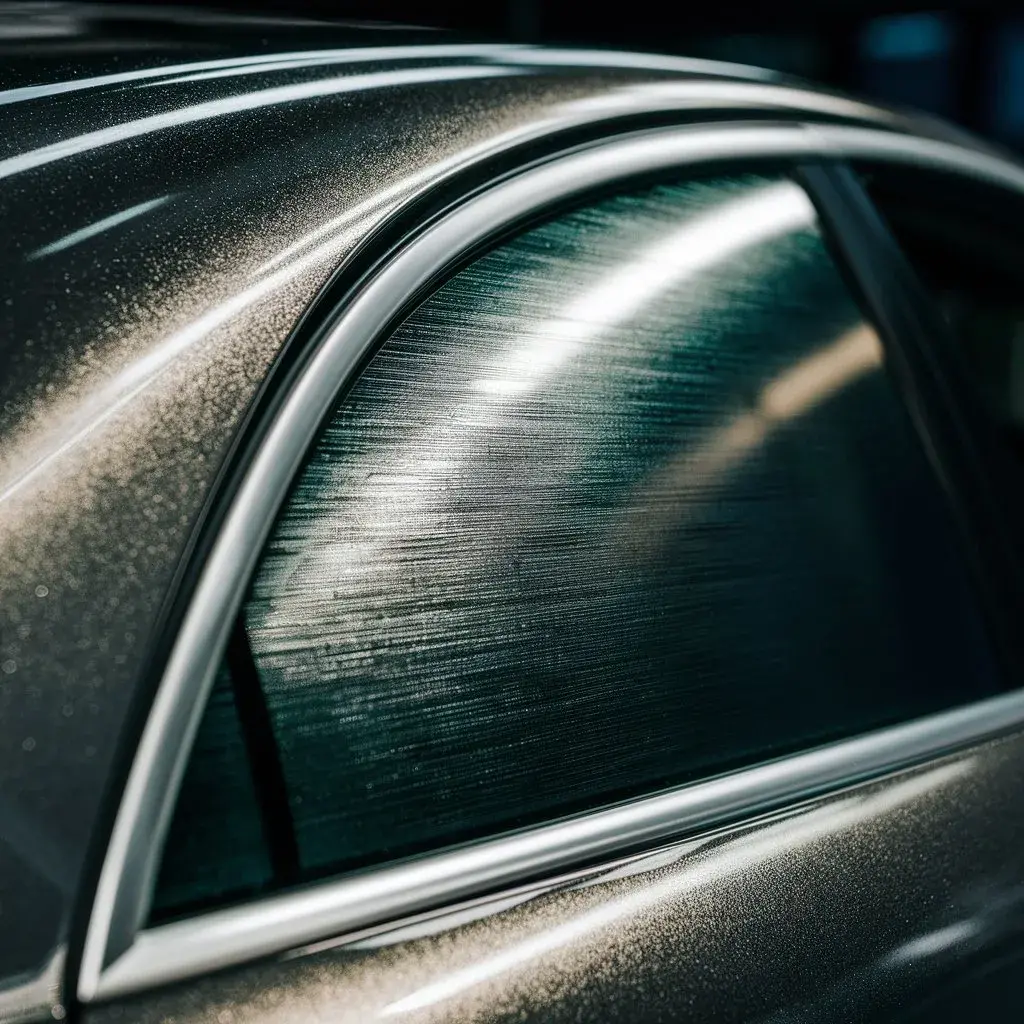
Metalized window tint, a sophisticated film technology, integrates layers to enhance the performance and durability of glass surfaces. At its core, the polyethylene terephthalate (PET) substrate provides the essential framework, supporting a precisely deposited metalized layer through advanced sputtering techniques. Metals such as nickel or aluminum are used, reflecting UV rays and infrared radiation, thus contributing significantly to thermal control and energy efficiency. While commonly utilized in auto glass tinting for reducing glare and increasing privacy, its application in architectural contexts is equally vital, promoting sustainable building practices by minimizing cooling costs. The evolving technology and potential modifications in metalized tint compositions present intriguing possibilities for future advancements in this field.
Composition of Auto Glass Tinting with Metalized Window Tint
Metalized window tint is composed of several layers, including a base film, metalized layer, and protective top coating, each engineered to enhance durability and reflectivity. The base film typically consists of polyethylene terephthalate (PET), a type of polyester that is known for its strength, clarity, and stability. This foundational layer serves not only as the substrate for subsequent metal deposition but also contributes significantly to the tint’s overall structural integrity and UV blocking capabilities.
The central feature of metalized tinting is the metalized layer. Here, metals such as nickel, stainless steel, or aluminum are deposited onto the PET base through a process called sputtering. During this precision-oriented procedure, metallic atoms are embedded into the film in a dense, uniformly thin layer. This metallization process is crucial as it directly influences the tint’s ability to reflect solar heat and light, thereby enhancing thermal regulation within the vehicle or building.
A robust protective top coating seals these underlying layers from the elements, preventing scratches, nicks, and peeling. This exterior coat is usually made from a durable, clear material that maintains the optical clarity of the window while safeguarding the metallic layer from oxidation and potential corrosion, thus ensuring longevity and sustained performance of the tint.
Practical Applications of Metalized Tint
Commonly utilized in automotive and architectural industries, metalized tint serves as a highly effective solution for reducing glare, enhancing privacy, and improving energy efficiency. This tinting technology incorporates a thin metallic layer, typically consisting of aluminum, nickel, or copper, which is embedded between layers of film. This metalized layer not only reflects solar radiation but also strengthens the window, providing an additional layer of security against break-ins and accidental breakage.
In the automotive sector, metalized tint contributes to a more comfortable driving experience by significantly cutting down on the solar heat accumulation within a vehicle. This reduction in heat mitigates the burden on air conditioning systems, thus enhancing fuel efficiency and reducing vehicle emissions. Furthermore, the reflective property of the metalized film offers superior privacy for passengers and protection against UV radiation, which can degrade interior fabrics and materials.
Architecturally, metalized tint is applied to windows in residential and commercial buildings to achieve similar benefits. By blocking a substantial portion of UV light and infrared radiation, it helps in maintaining consistent indoor temperatures, thereby reducing the load on HVAC systems and lowering energy costs.
The aesthetic versatility of metalized tint also supports various design visions, making it a favored choice among architects and designers striving to combine functionality with style.
In conclusion, metalized window tint, akin to a shield that both guards and regulates, integrates advanced materials engineering and functional design to create a harmonious balance between environmental control and aesthetic appeal.
This sophisticated material technology not only mitigates the adverse effects of solar radiation but also contributes to sustainability and comfort in auto glass tinting and architectural environments.
As such, it exemplifies the synergy between innovation and utility in modern material applications.